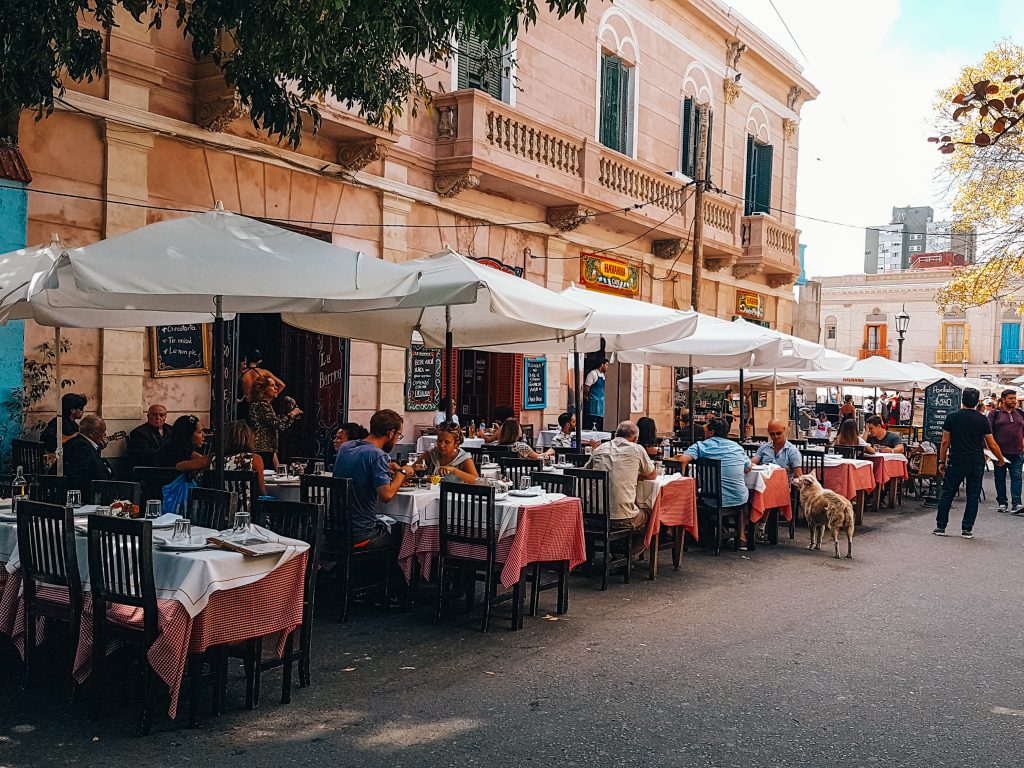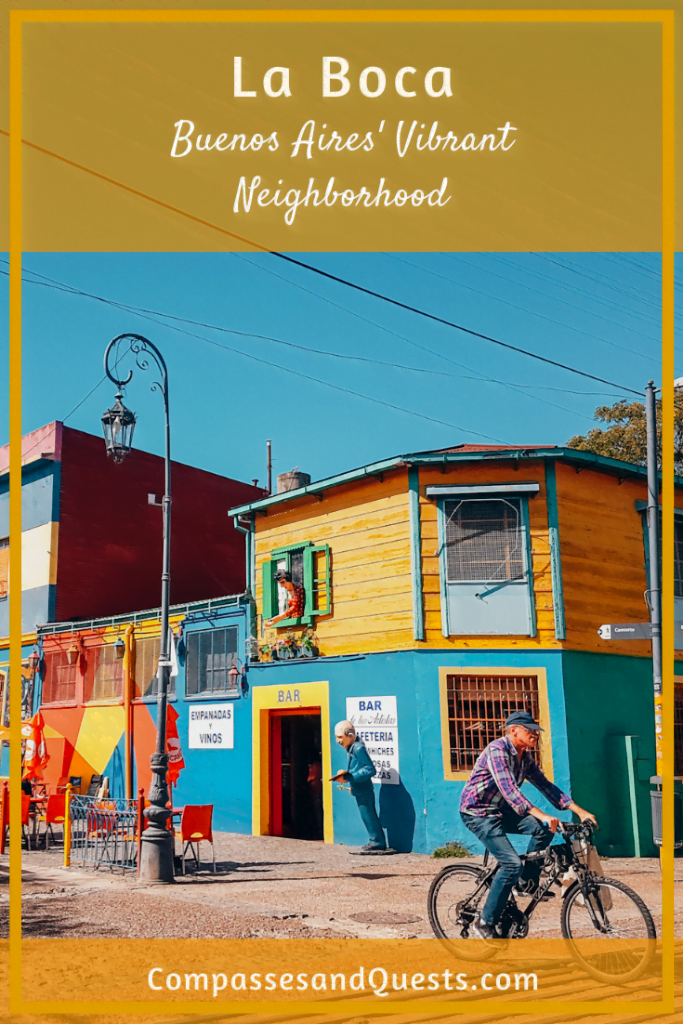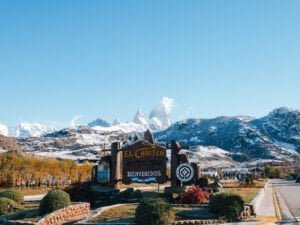Buenos Aires is composed of numerous barrios, or neighborhoods, each with their own unique vibe. This made it a lot of fun to extensively explore the city to see what each area had to offer. Let me tell you, we did A LOT of walking and wandering in order to see everything we could in the time we had. La Boca is one of the popular neighborhoods of Buenos Aires to visit with its extremely colorful streets and lively scene. If you’re looking for a great way to spend some of the day in the city, La Boca is a wonderful place to spend it!

Things to Know Before You Visit
A couple locals told us that La Boca was over-hyped. But, as with anything while you travel, it is what you make of it. We had a good time there that made the trip out of the city center worth it. Many others clearly think it’s worth it too because it was very busy and touristy. Whether people come for the tango, wildly colored buildings, or to support the popular Boca Juniors football team, this place is often a bustling place to be.
However, multiple people also told us that La Boca is not the place we wanted to find ourselves after the sun goes down. As in any busy city scene, be aware of pickpockets, day or night. While walking the streets, a few eager artists, street performers, and restaurant staff will likely approach you. If you’re not interested in their offer, politely decline and continue on your way.

La Boca is busiest when there is a football game at La Bombonera stadium and during afternoons and weekends. There will be more restaurants open, more artists who have set up, and more visitors in the streets. If you are looking for a quieter experience, go in the late morning on a weekday.
Getting to La Boca
La Boca lies near a huge port along the coast just south of San Telmo neighborhood. The best way to reach La Boca highly depends on where you’re staying in Buenos Aires. You may be able to walk to it; however, we were staying inland a ways north, so we opted for public transport.

To travel by colectivo or Subte (subway) in Buenos Aires, you’ll need a Sube card. You can purchase them at some subway station kiosks or many convenience stores. These stores will usually have a Sube sign in their window and you can go straight up to the counter and ask for one. We shared a card and loaded several USD onto it to get to and from La Boca. You can supposedly also manage your balance through the SUBE app now. Learn more about using the card here.
We took bus #29; however, ask a local or your accommodation staff which bus to take since there are multiple that go to La Boca depending on where you are staying. When you hop on, tell the driver where you are headed and they will charge you accordingly when you tap your card. For the subway/trains, tap your card on the card readers both when you enter the station and when exiting.
If you are unsure of where to hop off the bus, try to sit near the front and confirm with the driver when you reach the stop near El Caminito. Many of the stops are well-marked on Google Maps. The bus dropped us near the port, and we caught it there again when we were ready to leave.

Taxis are also an option; however they are more costly. Unlike in many of the other cities we visited in South America, official taxis in Buenos Aires had a meter.
Exploring La Boca
Once we hopped off the bus, we headed away from the port towards El Caminito, La Boca’s most famous street. Here, we watched some tango, walked through a variety of shops and stalls selling trinkets and clothing, and watched a few artists at work. Be aware that this street is a quite touristy and many restaurants and shops are more expensive than surrounding areas.


We also explored the surrounding streets, admiring the bold buildings, sculptures, and unique murals. The outlying streets were a bit more quiet and affordable. We found a little hole-in-the-wall empanada shop for lunch run by two very friendly ladies.
If you’re interested in experiencing more beyond the streets, attend a Boca Juniors football game or visit one of the museums in the area. Some options include Usina Del Arte, Fundación Proa, Museo de la Pasión Boquense, or Museo Benito Quinquela Martín.

Tours
If you’d rather have a more structured visit to La Boca, there a variety of tours that cover the neighborhood. Some are broader Buenos Aires day tours that have La Boca as a stop. Others allow you to bike through the neighborhood or visit the Boca Juniors stadium.
If you aren’t quite comfortable with public transport or your Spanish skills, a tour can be the way to go. This way, you can easily get to and from the neighborhood and learn more about the area along the way.
Tours can be found on sites like Get Your Guide and Viator or through local agencies in the city.
Like this Post? Pin it!




